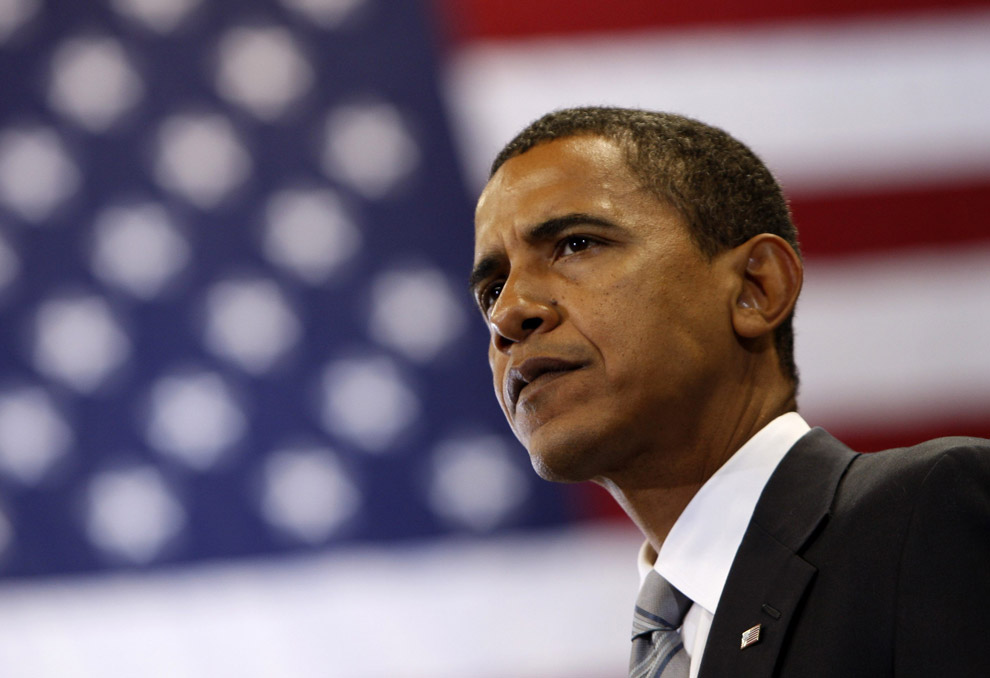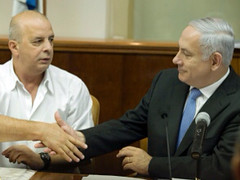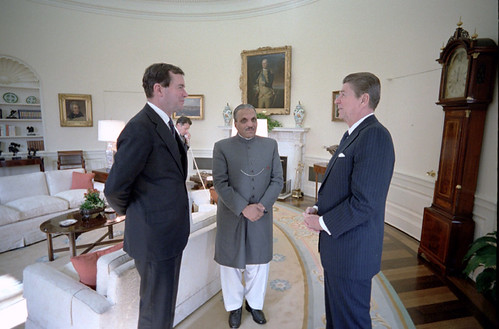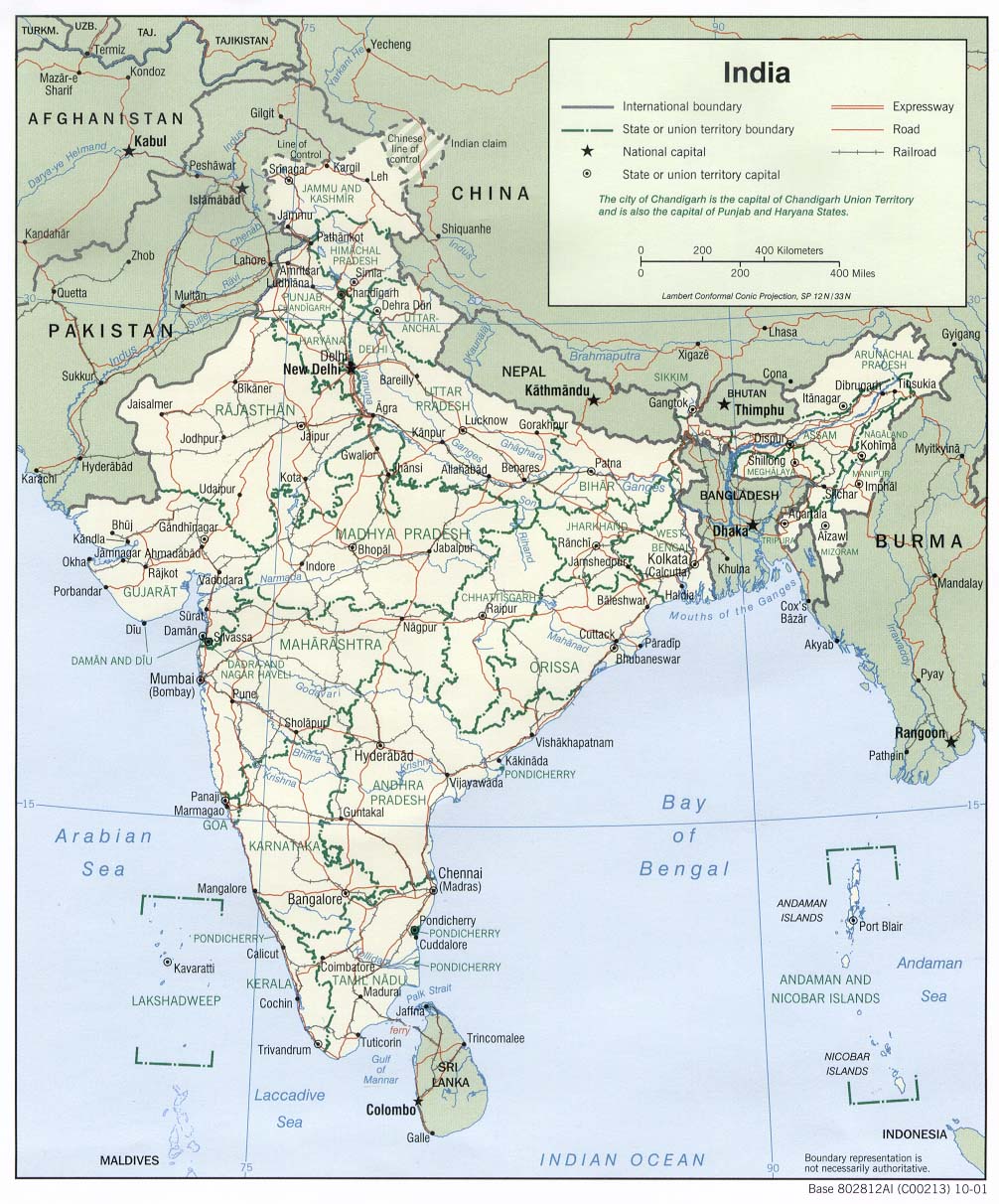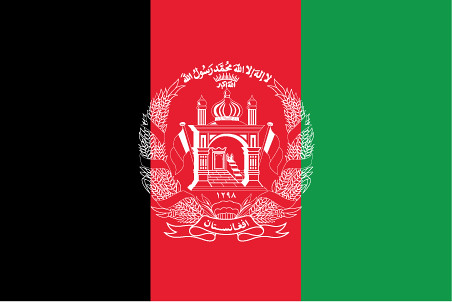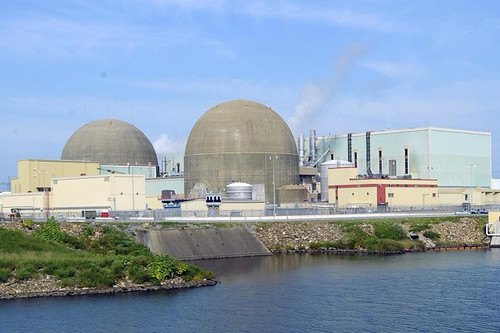SASSI is an independent think tank dedicated to promoting peace and stability in South Asia. We are headquartered in Islamabad, Pakistan and we aim to make a leading contribution to regional and international academic and policy-orientated research discourses about South Asian security.
Monday, April 30, 2012
The Obama Contradiction: Is this a sustainable way forward?
By Tom Engelhardt
He has few constraints (except those he’s internalized). No one can stop him or countermand his orders. He has a bevy of lawyers at his beck and call to explain the “legality” of his actions. And if he cares to, he can send a robot assassin to kill you, whoever you are, no matter where you may be on planet Earth.
He sounds like a typical villain from a James Bond novel. You know, the kind who captures Bond, tells him his fiendish plan for dominating the planet, ties him up for some no less fiendish torture, and then leaves him behind to gum up the works.
As it happens, though, he’s the president of the United State, a nice guy with a charismatic wife and two lovely kids.
How could this be?
Crash-and-Burn Dreams and One That Came to Be
Sometimes to understand where you are, you need to ransack the past. In this case, to grasp just how this country’s first African-American-constitutional-law-professor-liberal Oval Office holder became the most imperial of all recent imperial presidents, it’s necessary to look back to the early years of George W. Bush’s presidency. Who today even remembers that time, when it was common to speak of the U.S. as the globe’s “sole superpower” or even “hyperpower,” the only “sheriff” on planet Earth, and the neocons were boasting of an empire-to-come greater than the British and Roman ones rolled together?
Read more »
Drone strikes: Pakistan may boycott Chicago summit
A statement issued by the Foreign Office denounced the latest strike as “a violation of Pakistan’s sovereignty”.
“Such attacks are in total contravention of international law and established norms of interstate relations,” it added. The matter would be taken up through diplomatic channels both in Islamabad and Washington.
A senior government official told The Express Tribune that Pakistan was contemplating a number of options to convey a strong message on drone strikes to the US. One such option includes pulling out of the Chicago summit scheduled for May. It was, however, not clear whether Islamabad was formally invited to the gathering of nearly 50 heads of states and governments.
US Special Representative for Afghanistan and Pakistan Marc Grossman did request the Pakistani leadership during his recent trip to attend the summit, said the official. “The latest drone attack clearly is an attempt to discredit democracy in Pakistan,” added the official, who was part of recent negotiations between Islamabad and Washington. More
Saturday, April 28, 2012
Obama's Secret Drone War Explained
Friday, April 27, 2012
Israel's former Shin Bet chief: I have no confidence in Netanyahu, Barak
"My major problem is that I have no faith in the current leadership, which must lead us in an event on the scale of war with Iran or a regional war," Diskin told the "Majdi Forum," a group of local residents that meets to discuss political issues.
"I don't believe in either the prime minister or the defense minister. I don't believe in a leadership that makes decisions based on messianic feelings," he added.
Diskin deemed Barak and Netanyahu "two messianics – the one from Akirov or the Assuta project and the other from Gaza Street or Caesarea," he said, referring to the two politicians' places of residence.
"Believe me, I have observed them from up close... They are not people who I, on a personal level, trust to lead Israel to an event on that scale and carry it off. These are not people who I would want to have holding the wheel in such an event," Diskin said. More
Last Call at the Oasis Official Trailer #1 - Water Documentary Movie (2012)
Firmly establishing the urgency of the global water crisis as the central issue facing our world this century, this documentary illuminates the vital role water plays in our lives, exposes the defects in the current system and shows communities already struggling with its ill-effects. Featuring activist Erin Brockovich, respected water experts including Peter Gleick, Jay Famiglietti and Robert Glennon and social entrepreneurs championing revolutionary solutions, the film posits that we can manage this problem if we are willing to act now.
New Documents Spotlight Reagan-era Tensions over Pakistani Nuclear Program
Previously General Vernon Walters Had Speculated that Zia Was "The Most Superb and Patriotic Liar I Have Ever Met"
Reagan Administration Supported Sale of F-16 with Advanced Radar Technology on Nonproliferation Grounds Despite CIA Warnings that Pakistan Would Share it with China
National Security Archive Electronic Briefing Book No. 377
Washington, D.C., April 27, 2012 – Preventing the spread of nuclear weapons has been a significant goal for U.S. presidents but there are instances when diplomatic and other interests have overridden concerns about nuclear proliferation. Israel since 1969 is one example and Pakistan during the 1980s is another. Concerned by new intelligence about the Pakistani nuclear program, in July 1982, the Reagan administration sent former CIA deputy director General Vernon Walters to meet secretly with Pakistani dictator General Muhammad Zia-ul-Haq. U.S. intelligence had detected an upswing of clandestine Pakistani efforts to procure nuclear weapons-related technology and unwanted publicity could jeopardize U.S. government economic and military aid to Pakistan, a key partner in the secret war against Soviet forces in Afghanistan.
According to documents published today for the first time by the National Security Archive and the Nuclear Proliferation International History Project, Walters told Zia that Washington had "incontrovertible intelligence" that Pakistani representatives had "transferred designs and specifications for nuclear weapons components to purchasing agents in several countries for the purpose of having these nuclear weapons components fabricated for Pakistan."
Confronted with the evidence, Zia acknowledged that the information "must be true," but then denied everything, leading Walters to conclude that either Zia "did not know the facts" or was the "most superb and patriotic liar I have ever met." While Zia restated earlier promises not to develop a nuclear weapon and made pledges to avoid specific nuclear "firebreaks," officials from Secretary of State George Shultz on down would conclude time and time again, that Zia was breaking his word.
In 1986, Arms Control and Disarmament Agency (ACDA) director Kenneth Adelman wrote in a memorandum to the White House that Zia "has lied to us again," and warned that failure to act would lead the General to conclude that he can "lie to us with impunity." While the Reagan administration was concerned about nuclear proliferation, it gave a greater priority to securing aid to Pakistan so it could support the Afghan anti-Soviet insurgency. The White House and the State Department leadership hoped that building a strong bilateral relationship would dissuade Pakistan from building nuclear weapons. More
Wednesday, April 25, 2012
South Asian Nuclear War Would Upend World Food Supply: Analysis
The expert behind the assessment said he marshaled empirical evidence in support of admonitions that a nuclear conflict might have unplanned international repercussions, Agence France-Presse reported.
"It is not just the arsenals of the U.S. and Russia that pose a threat to the whole world," Ira Helfand, a Massachusetts doctor with the International Physicians for the Prevention of Nuclear War, said in an interview with AFP. "Even these smaller [arsenals] pose an existential threat to our civilization, if not to our species. It would certainly end modern society as we know it."
Climatic alterations resulting from a nuclear conflict would cut the U.S. corn yield by a mean level of one-tenth for 10 years, according to the analysis. Soybean growth would suffer a comparable decrease, falling most significantly in the initial five years following the exchange, it adds.
Chinese rice generation would take a mean-level hit of 21 percent in the 48 months following such an event and endure a 10 percent decline for six subsequent years, Helfand determined.
The calculations do not consider boosts in ultraviolet radiation or the possibility of new weather cycles resulting in the rapid, deadly freezing of commercial vegetation, meaning agricultural tolls of a nuclear conflict might exceed Helfand's projections, AFP reported.
The analyst said more profound weather shifts would result if either Washington or Moscow employed a relatively limited part of its nuclear stockpile in an offensive. More
Exclusive: Senior U.S. General Orders Top-to-Bottom Review of Military’s Islam Training
“It was inflammatory,” Flynn told Danger Room on Tuesday. “We said, ‘Wait a second, that’s really not what we’re talking about.’ That is not how we view this problem or the challenges we have in the world today.”
The strong response by the Pentagon brass illustrates growing sensitivity around the issue since Danger Room’s investigation of anti-Islam materialin the FBI’s counterterrorism training last September. That story sparked strong condemnation of the training material from the U.S. Attorney General on down, and prompted the White House to order a review of U.S. counterterrorism training last October.
Despite that White House order, the “Perspectives” course, taught since 2004, not only evaded review, but had defenders in the Joint Forces Staff College that taught it.
Danger Room first learned about the course last month, and determined that one of its guest lecturers was Stephen Coughlin, who has taught FBI and U.S. Army audiences that Islamic law is a danger to U.S. national security. We sought comment from a representative for the Joint Forces Staff College, who defended the propriety of the course.
Feedback from students has been “mostly positive, usually around the 90% range,” Steven Williams, a spokesman for the college, e-mailed Danger Room on Mar. 14. “Students generally appreciate thought-provoking discussion and the freedom to consider critical perspectives.”
The Pentagon, though, told a very different story Tuesday. Flynn disclosed that since an unspecified “revision” of the course in the summer of 2011, multiple officers who attended the course had raised internal objections about its presentation of Islam and Muslims. He estimated that about 20 officers attend each eight-week elective course, which is offered four times a year. More
Tuesday, April 24, 2012
Memory / Intelligence Failure at the Pentagon
Here’s how that list typically went after the Los Angeles Times revealed that troops from the 82nd Airborne had mugged for the camera with the corpses or body parts of Afghan enemies: “The images also add to a troubling list of cases -- including Marines videotaped urinating on Taliban bodies, the burning of Korans, and the massacre of villagers attributed to a lone Army sergeant -- that have cast American soldiers in the harshest possible light before the Afghan public.”
That is, of course, only a partial list. Left out, for instance, was the American “kill team” that hunted Afghan civilians “for sport,” took body parts as trophies, and shot photos of their “kills,” not to speak of the sniper outfit that posed with an SS banner, or the U.S. base named“Combat Outpost Aryan.” (For Afghans, of course, it’s been so much worse. After all, what Americans even remember the obliterated wedding parties, eviscerated baby-naming ceremonies, blown away funerals, or even the eight shepherd boys “armed” with sticks recently slaughtered by helicopter, or any of the “thorough investigations” the U.S. military officially launched about which no one ever heard a peep, or the lack of command responsibility for any of this?)
When a war goes bad, you can be thousands of miles away and it still stinks like rotting cheese. Hence, the constant drop in those American polling numbers about whether we should ever have fought the Afghan War. Yes, war strain will be war strain and boys will be boys, but mistake after mistake, horror after horror, the rise of a historically rare phenomenon -- Afghan soldiers and policemen repeatedly turning their guns on their American “allies” -- all this adds up to a war effort increasingly on life support (even as the Obama administrationnegotiates to keep troops in the country through 2024). MoreEven granting the need to spin the assaults as failures, the official American reaction to the coordinated attacks in Kabul, the Afghan capital, as well as at Jalalabad airbase, and in Paktika and Logar Provinces, reveals a fundamental misunderstanding of guerrilla warfare and, in particular, of the type being waged by the Haqqani network.
Monday, April 23, 2012
The Enemy Within
The United States is a bit like a 375-pound, middle-aged man with a heart condition walking down a city street at night eating a Big Mac. He's sweating profusely because he's afraid he might get mugged. But the thing that's going to kill him is the burger.
Since the end of the Cold War, America has been on a relentless search for enemies. I don't mean a search in the sense of ferreting them out and defeating them. I mean that America seems to have a visceral need for them.
Many in the United States have a rampant, untreated case of enemy dependency. Politicians love enemies because bashing them helps stir up public sentiment and distract attention from problems at home. The defense industry loves enemies because enemies help them make money. Pundits and their publications love enemies because enemies sell papers and lead eyeballs to cable-news food fights.
The Greeks, who once seemed to know a lot more about life than they do about fiscal management today, noted that for any drama to succeed it requires agon -- conflict. The same seems to hold true for politics and foreign policy. It's easier to run against a threat than it is to articulate a vision of where we should be headed and how to get there. Absent clear dangers, it's hard to persuade people to fund giant defense and intelligence establishments or to mobilize international coalitions. (Just add up how many international coalitions are primarily against things -- enemies, hunger, disease, climate change -- rather than for things.)
For the World War II generation, there were the Germans and the Japanese, vilified so much that even today they are the enemies against whom all others are measured. Then there were the Soviets, who were both dependably evil and happened to be a genuine threat. After the communist collapse, America tried to replace them but came up at first only with tin-pot bad guys like Manuel Noriega, Slobodan Milosevic, and "Baby Doc" Duvalier.
Then came the 9/11 attacks, and politicians simply crossed out the word "Soviet" in their stump speeches, replaced it with "terrorist" (despite the huge disparity in the nature and scope of the threats), and started scaremongering and spending like the good old days. More
Our Own Worst Enemy
As evidence has mounted that the militants were trained and equipped across the border in Pakistan — where the Haqqani network has its core strongholds —questions have emerged over U.S.-Pakistani efforts to repair their already strained relations. U.S. intelligence officials have frequently accused the Pakistani Inter Services Intelligence (ISI) of supporting the rebel network's operations in Afghanistan.
Monday's attacks followed hot on the heels of a unanimously approved Pakistaniparliamentary resolution calling for specific conditions on security cooperation with U.S. agencies. The sweeping demands include an end to drone strikes in Pakistan, cessation of all unilateral overt and covert U.S. incursions, a ban on U.S. intelligence operations, an indefinite suspension of visas to private U.S. security contractors, and an unconditional U.S. apology for NATO airstrikes that killed 24 Pakistani soldiers last November.
How many of these conditions, if any, the United States would be willing to accept is unclear, although U.S. officials have taken pains to indicate their eagerness to renew relations. So far, rather than pointing fingers, U.S. Secretary of State Hillary Clinton has expressed the need for "shared responsibility for robust action" — which only underscores how critical the United States considers cooperation with Pakistan to be for regional security. More
Saturday, April 21, 2012
Tac Nukes in South Asia
Here’s what Morgenthau had to say about tactical nuclear weapons and escalation control:
Both tactical nuclear war and graduated deterrence presuppose three capabilities on the part of belligerents: the rational ability to deduce the intentions of the enemy from his use of nuclear weapons, the rational ability to know exactly at every moment of the war what kind of nuclear weapon it is necessary and prudent to use, and the practical ability to impose the limitations so determined upon all nuclear command posts. Both tactical nuclear war and graduated deterrence require a rational interplay of the intentions and actions of the belligerents, an interplay which theoreticians may calculate in the form of ‘models’ but which it is impossible to achieve consistently in reality. That impossibility derives from three factors: the essential ambiguity of the military act (which it of course shares with the political act), uncertainty about the enemy’s intentions, and the enormous and irreparable risks, in nuclear war, of mistakes in interpretation.
Of the countries that possess tactical nuclear weapons, the two that currently seem to place increased value on them are Russia and Pakistan. Pakistan’s program raises more red flags because military friction between Pakistan and India is more likely than Russia coming to blows with NATO or China.
The history of wars on the subcontinent is rife with miscalculation: one side or the other has been surprised by their beginning and prosecution. Tactical nuclear weapons also lend themselves to surprise and miscalculation.
Very short-range delivery systems for nuclear weapons – like the 60-kilometer Nasr (or Hatf IX) missile that Pakistan has flight-tested, and India’s 150-kilometer Prahaar – are not very helpful against tank offensives or fast-moving targets; even if railheads and bridges were suitable targets, they may not be within reach. Very limited use of tactical nuclear weapons by Pakistan might serve to warn India against advances, but the job of Pakistan’s armed forces is to prevent, and not to detonate, mushroom clouds on home soil.
Whatever limited military utility short-range nuclear weapons possess depends on extreme forward deployments, where they would be most subject to attack, where early use would be most likely, and where command and control is most susceptible to breakdowns. Avoiding these pitfalls requires very slow-moving fronts on the subcontinent and the absence of air strikes. The first assumption is not unreasonable; the second is very questionable. In a crisis, there are also significant internal-security and escalation risks associated with the movement and forward-deployment of short-range systems advertised as being nuclear-capable. More
Thursday, April 19, 2012
How the Virginia earthquake packed such a punch
The 5.8-magnitude tremor August 23 wasn’t huge by global standards, but punched above its weight. Scientists were struck by the way the tremor near the town of Mineral managed to damage the nation’s capital 84 miles away, putting cracks in the Washington Monument and toppling a spire at the National Cathedral. So: How’d it do that?
They’re also studying the ongoing aftershock sequence. The Mineral event isn’t truly over, because the fault is still generating small quakes, though fewer and fewer. Herein lies a research opportunity for understanding enigmatic East Coast tremors — how long does it take for the earth to calm down?
“The scientific evidence suggests that much of the earth’s crust is in a condition where the rock is close to failure everywhere,” said U.S. Geological Survey geophysicist Bill Ellsworth. “Even in the East Coast, the rocks are highly stressed.”
And Mineral is also a warning. No one was shocked when a moderate quake hit the Central Virginia Seismic Zone — that’s precisely where you might expect an earthquake. But it was much bigger than any recorded tremor in the zone. The previous standard was a roughly 5-magnitude event in 1875, its strength estimated from the damage it caused.
The obvious implication is that other seismic zones in the east are capable of generating earthquakes more powerful than anything in the historical record.
“The Virginia earthquake suggests that what we’ve seen in the past is not as bad as what we could potentially see in the future,” said John Ebel, a Boston College geophysicist who spoke with reporters in a conference call Wednesday from a meeting of the Seismological Society of America in San Diego.
Based on what happened in Virginia, “we have a seismic hazard that we really have to take seriously” in other major East Coast cities, including Philadelphia, New York, Providence and Boston, Ebel said. More
Nuclear plant operators globally must take heed of this information, and build it into their risk planning. Also see this article by KENICHI OHMAE. Editor
Wednesday, April 18, 2012
Fukushima: Probability theory is unsafe
As a nuclear core designer and someone who earned a Ph.D. from the Massachusetts Institute of Technology in nuclear engineering, I volunteered to look into the situation at Fukushima No. 1 in June of 2011. Mr. Goushi Hosono, minister of nuclear power and environment, personally gave me access to the information and personnel who were directly involved in the containment operations of the postdisaster nuclear plants. After three months of investigation, I analyzed and wrote a long report detailing minute by minute how the nuclear reactors were actually disabled (pr.bbt757.com/eng/)
Here are the highlights of my findings:
1. Three of the six reactors of Fukushima No. 1 had a complete core meltdown a few days after the tsunami hit. The molten fuel penetrated not only through the bottom of the thick pressure vessel, but also poked holes at the bottom of the containment vessel, thus releasing fission materials into the environment. The meltdown itself started at 11p.m. on the day of the tsunami, March 11, 2011.
2. As expected, the meltdown caused the fuel cladding material, zircaloy (zirconium alloy), to react with vapor and to create large quantities of hydrogen and zirconium oxide, which caused the catastrophic hydrogen explosion that blew out three reactor buildings. The hydrogen explosion took place on March 12, 14 and 15. The Japanese Government did not admit to the meltdown until three months later, nor did they admit to the damage to the containment vessels until a half year later. Our government tried to hide this important information for some reason, though judging from the amount of fission material released and from the size of the hydrogen explosion, the meltdown of the entire core was undeniable for anyone who has studied reactor engineering.
3. The earthquake on March 11 damaged all of the five independent external power supply systems, and the 15-meter-high tsunami damaged all of the pumps and motors of the main and emergency cooling systems that were constructed along the shore line, thus disabling the cooling system that pumps in sea water.
4. The tsunami also sent massive amounts of water into the reactor buildings and the turbine housing, thus soaking the emergency diesel engines and batteries, which were stored in the basement of these buildings. This meant that all sources of emergency backup power stored in the basement of the reactors were totally destroyed.
5. There was an air-cooled diesel engine sitting atop a hill close to Reactor No. 6. Its airfins were too big to fit into the basement and was luckily placed outside, and as such, this engine started to generate electricity. With a pump brought in from outside, it started to cool not only Reactor No. 6, but had enough power to cool Reactor No. 5. Of the 13 emergency generators associated with the six plants, this was the only one of the three air-cooled backups, and hence not dependent on water as the heat sink. This air-cooled diesel engine was the only one not entirely submerged in water, but in fact at one point the water level did reach up to half its height. A few weeks later Reactors No. 5 and No. 6 were brought to a cold shutdown.
6. The buildings of reactors No. 1 and No. 3 were blown away by an explosion of hydrogen generated by the core meltdown. Reactor No. 4 eventually exploded, though its core had no fuel inside due to a periodic inspection that meant the fuel rods were stored elsewhere. It turned out that the Reactor No. 4's building filled with hydrogen that leaked from Reactor No. 3 through their common gas release ducts. Reactor No. 2 escaped from the massive explosion, although its core had completely melted. Its windows were blown away most likely by the explosions from neighboring reactors No. 1 and No. 3 and the hydrogen inside Reactor No. 2 escaped into the air. More
